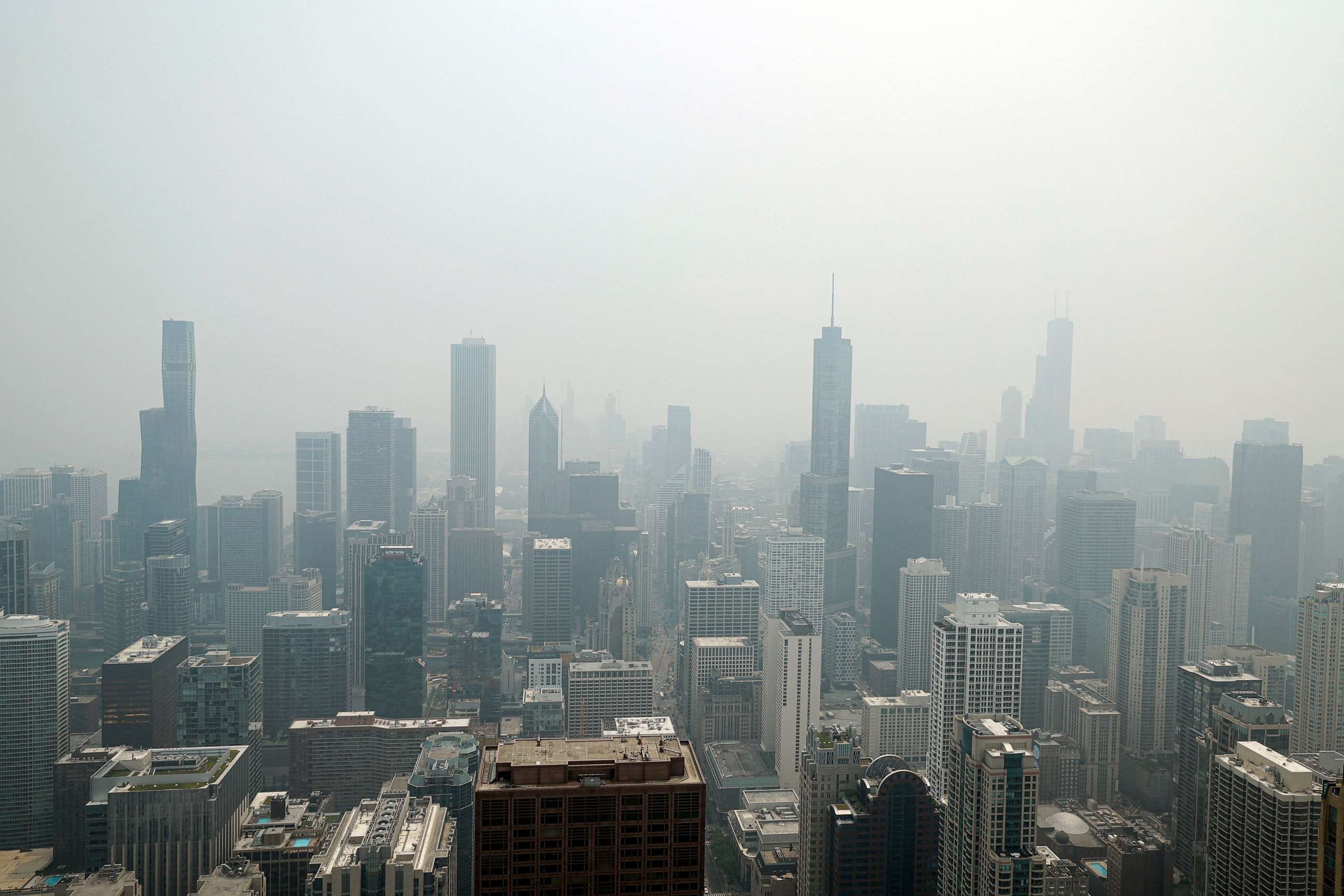What to know about the Air Quality Index from wildfire smoke and how it affects human health
Heavy blankets of smoke billowing over the United States from wildfires burning in neighboring Canada are threatening the health of millions of people -- even non-vulnerable populations with no preexisting conditions. But what about the smoke makes it so hazardous for humans to be around?
Wildfire smoke contains fine particulate matter, known as PM2.5, which are microscopic solid or liquid droplets -- often 30 times smaller than the diameter of a human hair -- that can be inhaled and cause serious health problems, according to the U.S. Environmental Protection Agency.
Most particles form in the atmosphere as a result of complex reactions of chemicals, such as sulfur dioxide and nitrogen oxides -- pollutants emitted from power plants, industries and automobiles. But wildfires likely contain PM2.5 that is up to 10 times more harmful than the same type of air pollution coming from combustion activity, according to a 2021 study conducted in California.

PM2.5 is considered unhealthy for "Code Orange" and sensitive groups once the Air Quality Index surpasses 100, according to AirNow, a website that publishes air quality data. Once the AQI surpasses 150, it is considered "Code Red," unhealthy for some members of the general public who may experience health effects, with sensitive groups experiencing more severe effects.
The AQI is at "Code Purple" once it surpasses 200, considered "very unhealthy" with increased health risk for all populations. "Code Maroon" is labeled as "hazardous" and a health warning for emergency conditions once the AQI reaches 300 and higher.
At Code Maroon, "everyone is more likely to be affected," according to AirNow.
A "good" AQI is measured at 50 and below, and a "moderate" air quality index ranks between 51 and 100.
Read more here.
-ABC News’ Julia Jacobo









